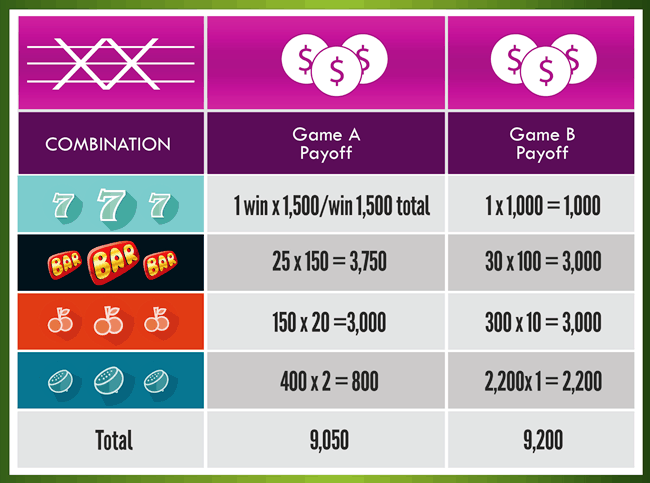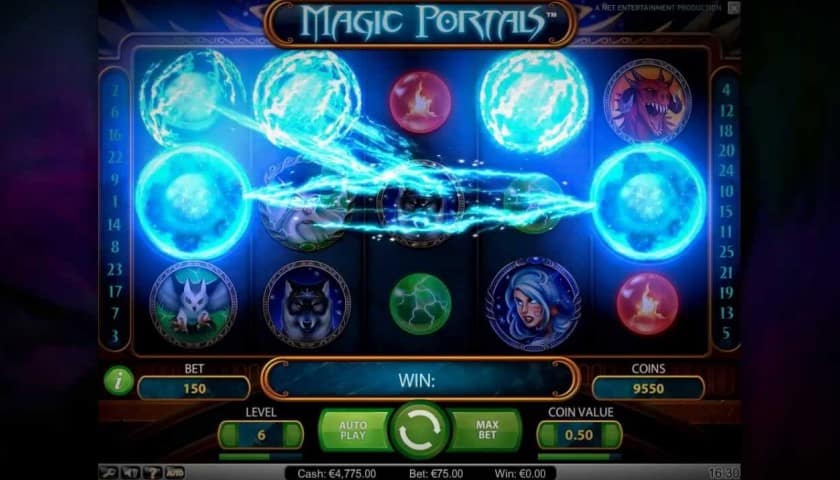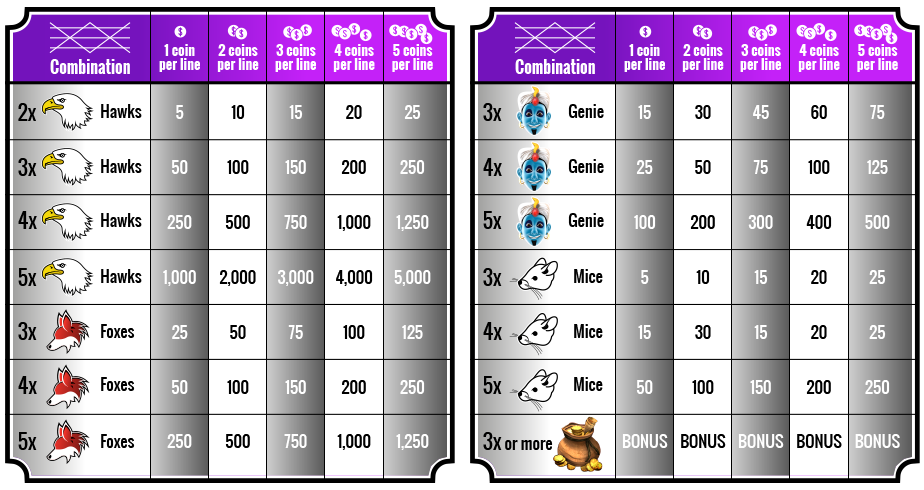Hit Frequency Slots

Original Source: HR News (View Article)
If you have engaged in your fair share of slot machines, then you have most likely noticed that some titles award payout combinations more than others. It is common knowledge that slot games are programmed to grant winnings randomly with the results of each spin being independent of the next. Therefore, most people prefer to go through a simple playing strategy and watch the reels spin. For instance, in the free Triple Diamond slots, all one has to do is place their stake and hope to walk away with more money in their pockets than what they came in with. Even with the random nature in playing, several factors are built in to contribute to how they generate winnings. One of these elements is the hit frequency, which often goes unnoticed under the shadow of RTP, house edge, and volatility.
Also known as the hit rate, hit frequency refers to the likelihood of a slot hitting a payout combination as opposed to landing nothing. Slot machines are built as negative expectation games, which means that the chances of losing are usually higher than those of winning in each round. Hit Frequency many times ties to slot volatility because lower volatility machines tend to hit more often and pay less per hit, while higher volatility slots tend to hit less often but pay more when they do. So Hit Frequency can be sometimes a very easy way to tell how volatile a slot machine is. Lots of dead spins, which is a low hit Frequency. For most slot machines, the hit frequency ranges from 9 to 25 percent. This turns out to a hit average of 9-25 times for every 100 spins conducted. These hits could be anything from a marginal return to a huge payout. It’s important to note that there is usually no direct correlation between payout percentage and hit frequency. Basically, hit frequency refers to how often a slot game will form a winning combination as opposed a losing one. As you already know, not all spins will result in a win and not all will result in a loss.
The Value of Slot Hit Rates

Hit Frequency Slots Poker
Hit frequency is a rather simple concept to grasp compared to other metrics used to determine the payout rates in games. Also known as the hit rate, hit frequency refers to the likelihood of a slot hitting a payout combination as opposed to landing nothing. Slot machines are built as negative expectation games, which means that the chances of losing are usually higher than those of winning in each round. The hit frequency calculation is made according to any formation of a winning combo or landing bonus features. Therefore, payout clusters that award less than the placed stake count as well. For instance, a round with a bet of ten dollars can generate a winning combination worth five dollars. Even though the spin results in a payout, you will still be at a loss of five dollars. Nonetheless, the round will count towards the hit frequency, even if you do not win in terms of the placed stake.
Hit Frequency Slots Online

The online platform is riddled with thousands of slot games, which makes the range of hit rates quite extensive. The frequency with which winnings are landed varies in each slot game with some awarding more payouts than others. In most cases, slot games display hit rates of between 20% and 30%. The closer the figure is to 30%, the more likely a pokie is to award winning clusters. Most online gaming software developers do not include information on the hit rates of their releases. Therefore, it is up to gamblers to find out for themselves how often a pokie pays. However, some online game-review sites ease this burden by running the numbers and providing them to readers.
Hit Frequency Against Other Slot Factors
The hit frequency is only one of several factors that most gamblers weigh before settling on a slot. When choosing the ideal pokie to engage, it is recommended to consider the hit rate alongside other parameters, such as:
Variance Rating
The hit frequency of slot games is often confused with volatility, which is also referred to as variance. Slot volatility refers to the tendency of a pokie to table rewards on a small scale. This phrase discloses not only how often it is likely to pay but also the range within which the amount will fall. Usually, slots fall into three volatility classes, and they are:
- Low volatility – frequent payouts but in small amounts
- Medium volatility – wins come in average amounts and intervals
- High volatility – winnings are rare, but they are granted in significant amounts
Slot volatility gives players a glimpse on how slots pay on a smaller level while hit frequency covers the overall average. Nevertheless, one metric can often be used to tell about the other, even if the results do not correlate. For instance, a high variance slot is likely to have a low hit frequency with payouts being spaced out. Low volatile slots, on the other hand, have high hit rates since small winnings are granted more often. However, unlike volatility that carries some prediction for the winning values, hit frequency does not. Like the hit rate, slot variance is often unverifiable since not all online gaming software developers disclose this information.
RTP Rate
Of all the factors used to predict the wins in pokie machines vaguely, RTP is the most popular. Return to Player rates are a fundamental part of judging the fairness of a slot game, even though they are hypothetical. RTP percentages provide insight to the amount a slot is likely to award gamblers as winnings. This rate is used to predict the fairness of a title in long-term measure. For example, a slot with an RTP rate of 95% is likely to pay about 95 dollars for stakes of 100 dollars placed over a long period. Typically, the percentage that is granted to punters is usually lower than what goes in as wagers. This difference is what keeps gambling destinations in business since they help rake in profits.
Slot RTP percentages are a lot like the hit frequency since they focus on long-term fairness. The higher a slot payout rate, the more likely the game is to be fair with winnings. That way, even if the game is still a negative expectation game, it comes close to offering true odds of 100%. Players should note that RTP predictions are hypothetical and cannot be used to tell the definite wins that can be provided in a game.
Bonus Features

Often, bonus features in slot games are viewed as harmless additions to the entertainment and payout value. However, they play a significant role in how pokies pay. Slot games that feature long lineups of incentives such as free spins, wilds, scatters, bonus games, and gamble features tend to pay at lower rates than those that depend on fewer events to grant winnings. Usually, software providers include a vast range of bonuses to slot games with low hit frequencies. This is because they have additional options to collect sizeable winnings in the game beyond regular combination winnings. With high-frequency rates, such slots would drive gambling destinations into hard losses. On the other hand, slots with high hit rates usually feature few bonuses, which gives punters a fair shot at landing whatever little the title has to offer.
Payout Values
The hit frequency of a slot also affects the winning values in slots and vice versa. One easy way to predict the hit rate of a pokie is to look at its paytable. Slots with multiple winnings that are far above the total bet used are likely to have a low win frequency. On the other hand, pokies with small payouts have high hit rates. Even though those in the latter category do not offer substantial winnings, they come with a higher chance of providing payouts.
Jackpot Win
Like with the slot payouts, the jackpot win in a game is likely to determine its hit frequency. Most slot games that feature high jackpot payouts have low hit frequencies. Typically, slot games with jackpots as high as 100,000 dollars fall in the low hit rate category. The chances of landing winning combos, even those that still result in losses, is lower than those of small jackpot games. The chances of landing winning combinations become even thinner when this amount climbs higher. This is especially the case in slot games with progressive jackpots that count as high as millions. Even if the games pay well in the long run, they are likely not to award too many payouts in the short-term.
Hot and Cold Predictions
One facet in slots that is not affected by hit frequency is the hot and cold prediction of winnings. This concept is often considered a fallacy even when standing in its own. The factor explains that a pokie machine is likely to award a significant win after a long period of losses and vice versa. However, even with several elements that can be used for predictions, slot rounds are usually independent of each other. Therefore, the results of spins cannot be influenced by those of the previous rounds or change those of the next ones. Unlike the hit rate that deals with predicting accuracy in the long haul, this misconception feeds into the guarantee of specific results in the short term, which makes it undependable. Instead, players can focus on other elements like RTP besides the hit frequency to tell whether a set is worth their time.
Hit Frequency Slots Games
Final Remarks
Hit frequency is an important metric to keep your eye on when choosing an ideal pokie machine. However, pay attention to other parameters as well, since the hit rate can be deceiving. One of the most significant holes with these figures is that they only represent your chances of landing a payout round rather but does not touch on their value. Therefore, you could end up with a high hit frequency slot that has a lot of losses disguised as wins. Avoid such cases by looking into the RTP values and volatility of games, especially when considering real money gameplay. Nonetheless, keep in mind that this metric is hypothetical and cannot be used to predict the winning pattern of a game with certainty.
The post How Does the Hit Frequency Affect Online Slots? appeared first on HR News.